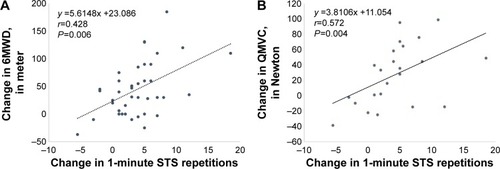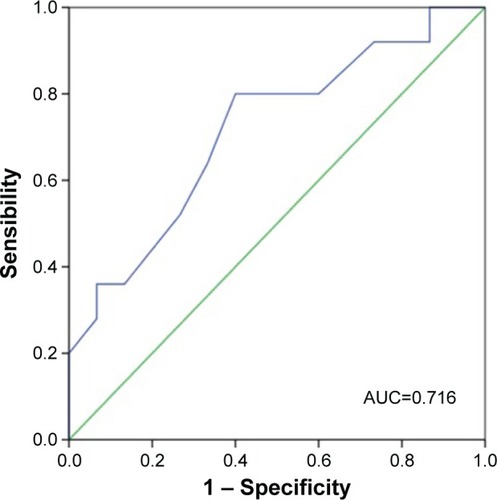Figures & data
Table 1 Baseline characteristics of the patients
Table 2 Main determinants of 1-minute STS repetitions at baseline (multivariate analysis)
Table 3 Change of the parameters measured during 1-minute STS test at baseline and at the end of PR
Table 4 Comparisons between 1-minute STS repetitions, 6MWD and QMVC at baseline and the end of the PR
Figure 1 Association between change in 1-minute STS test and change in (A) 6-minute walk distance (6MWD) and (B) quadriceps maximal voluntary contraction (QMVC) with pulmonary rehabilitation.
Abbreviations: 6MWD, 6-minute walk distance; QMVC, quadriceps maximal voluntary contraction; STS, sit-to-stand.

Figure 2 Receiver operating characteristic curve for the identification of the minimal important difference of the 1-minute STS test using a 30 m improvement in 6-minute walk test as anchor.

